https://docs.google.com/document/d/1H0BGj16iUF1lqrZyfEly8SeEK9FZ1a-hhzQFgPRtUSs/edit?usp=sharing
https://docs.google.com/document/d/1XWS5HNGQiqYNavbU4j06sRcvhflg3tTQ3zGH-l55DtA/edit?usp=sharing

https://docs.google.com/document/d/1H0BGj16iUF1lqrZyfEly8SeEK9FZ1a-hhzQFgPRtUSs/edit?usp=sharing
https://docs.google.com/document/d/1XWS5HNGQiqYNavbU4j06sRcvhflg3tTQ3zGH-l55DtA/edit?usp=sharing
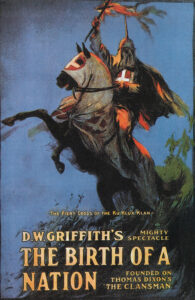 war drama that was screened in the White House of all places, depicted freed slaves as savages whose only goal in life was to take advantage of white women’s innocence and became America’s first blockbuster, representation of black people has been negative to say the least.
war drama that was screened in the White House of all places, depicted freed slaves as savages whose only goal in life was to take advantage of white women’s innocence and became America’s first blockbuster, representation of black people has been negative to say the least.“White patrons of the era were so conceited that they had created for Black people this exotic identity, which in dance or literature meant that their distinctive character was their sensuality or, in other words, their closeness to jungle rhythm.”
“The New Negro Movement And The African Heritage in a Pan- Africanist Perspective.” Sonia Delgado-Tall, Jan. 2001, pp. 288-310
 people of color, especially black women, are still being caricatured and stereotyped in all forms of media today. With all-white, male writers, directors, and casting agents, it is not a surprise why black women can be so inaccurately depicted and with colorism thrown into the mix, it just seems like black women can never catch a break.
people of color, especially black women, are still being caricatured and stereotyped in all forms of media today. With all-white, male writers, directors, and casting agents, it is not a surprise why black women can be so inaccurately depicted and with colorism thrown into the mix, it just seems like black women can never catch a break. One of the main problems that cause these inaccurate, stereotypical black characters is the fact that the writing rooms are filled with white screenwriters trying to write black characters. And this is not to say that white people can’t write about an experience that is not their own, but the majority of the issues come up when there is no research done or these screenwriters believe that they can figure it out based on their own perceptions of black people. This can lead to black characters that black people can’t relate to. For example, when the spinoff Grown-ish was announced and people found out that it would feature young college students attending an HBCU, there was a lot of buzz and excitement. Unfortunately, the show fell short for some of its intended audiences, one reason being the writing of the show’s main character, a black girl, and blamed this on there only being two regular middle-aged black writers in the writing room.
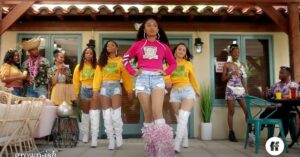
Another, mostly overlooked, problem is the stereotypical black girl character tropes. That is: “The Baby Momma”, “The Token Best Friend”, “The Black Barbie/White-Washed One”, “The Fat and Stupid One”, and, the most used in my opinion, “The Angry/Sassy One” and the list goes on. These character tropes of black women have been in western film since the beginning, starting with the “Mammy” character “who puts the care of children and families of others above her own.”
“Inherently connected with the question of job opportunities where the Negro woman is concerned, is the special oppression she faces as Negro, as woman, and as worker. She is the victim of the white chauvinist stereotype as to where her place should be. In the film, radio, and press, the Negro woman is not pictured in her real role as breadwinner, mother, and protector of the family, but as a traditional “mammy” who puts the care of children and families of others above her own. 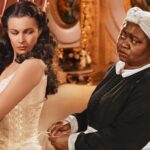 This traditional stereotype of the Negro slave mother, which to this day appears in commercial advertisements, must be combatted and rejected as a device of the imperialists to perpetuate the white chauvinist ideology that Negro women are “backward,” “inferior,” and the “natural slaves” of others.”
This traditional stereotype of the Negro slave mother, which to this day appears in commercial advertisements, must be combatted and rejected as a device of the imperialists to perpetuate the white chauvinist ideology that Negro women are “backward,” “inferior,” and the “natural slaves” of others.”
“An End to the Neglect of the Problems of the Negro Woman!” Claudia Jones, 1949, p318
These stereotypical characters who are played out in film and television portray a narrow minded view of who a black woman can be. They trivialize black women’s struggles, a majority of them are demeaning and they seem to only be there to meet a diversity quota or to avoid backlash from “woke twitter”. A black woman, like any other person, is multifaceted. Yes, they can be sassy, but they can also be reserved and their whole personality doesn’t depend on one or the other.
Reality TV is another way black women are shown in the entertainment industry. Shows like The Real Housewives of Atlanta garner mixed reviews from all types of people. Some see it as merely a guilty pleasure that they watch weekly while others see it as another reason why black women are caricatured and stereotyped. In this case these groups of women are held up to be an example of all black people by some. To me this is very surprising being that there are other Real Housewives shows with a mainly white or all white cast who aren’t held up to represent the entire white community.
Arguably the most important portrayal of black people comes through cartoons. This is because young children are the targeted demographic. When a young black person sees themselves or someone they can strongly relate to in cartoons, especially if they are a main character, makes them feel seen and acknowledged by society. Unsurprisingly, there are not a lot of black cartoon characters who are the main character and the number is even smaller for black girl characters. 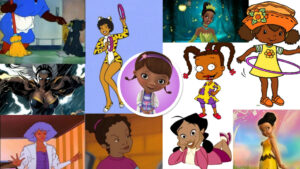
Black characters are more than an opportunity for a race joke, more than a caricature, and more than a stereotype. They are supposed to show the personalities, experiences, struggles, and triumphs of black people and it is important that this is done correctly because accurate representation is important.
Works Cited
“How To BLACK: An Analysis of Black Cartoon Characters (Feat. ReviewYaLife).” YouTube, 13 Jan. 2019, youtu.be/uOwhBkoNK0g.
“Is the Portrayal of Black Women on Reality TV Damaging?” YouTube, 4 Feb. 2016, youtu.be/v45lbauzSp8.
“Mammy, Jezebel and Sapphire: Stereotyping Black Women in Media: The Listening Post (Feature).” YouTube, 26 July 2020, youtu.be/2teqoyPe3TU.
“The Not So Silver Screen.” AAPF, aapf.org/the-not-so-silver-screen.
Delgado-Tall, Sonia. “The New Negro Movement and the African Heritage in a Pan-Africanist Perspective.” Journal of Black Studies, Sage Publications, Inc., Jan. 2001, www.jstor.org/stable/2668034.
Jones, Claudia. “An End to the Neglect of the Problems of the Negro Woman!” Let Nobody Turn Us Around, edited by Manning Marable and Leith Mullings, Rowman & Littlefield Publishers, Inc, 1949.
Shoan Chowdhury
BLST 10100
Professor Poe
Multimodal Project
The Negro Artist and the Importance of Afrocentric Art
While reading numerous articles about African American art and how it existed way
before the idea of “modern art” shows how suppressed the minority population was going as far as trying to get rid of any influential people in the creative world. In the textbook Let Nobody
Turn Us Around one of the most influential African Americans in America in the 1940s was
historical figure Paul Robeson an “All American athlete and valedictorian earning a degree from
Columbia Law School and gaining most of his fame as an actor, singer, and later a civil rights
activist” (326).
As described in Afrocentricity by Molefi Kete Asante as “marking” where you create a
“cultural boundary around a particular cultural space in human time” (Asante). The cultural
boundary that Paul Robeson created was that he was one of the few African Americans in the
spotlight allowing him to voice his opinions on the racial injustice that occurs in this country. At
one point even gathering enough attention of Senator Joseph McCarthy who held congressional
hearings to “denounce Paul Robeson after the controversy of his statements that African
Americans would not fight in an imperialist war” (New York: Viking Press, 1971). This is a
clear example of African Americans being silenced as Robeson is being denied his First
Amendment which is Freedom of Speech. The fact that this clear abuse of government power is
occurring in the national spotlight you can only imagine the number of unfair rulings that were
swept under the rug throughout the years.
Paul Robeson by taking the step forward in the Civil Rights Movement is describing what
Molefi Asante wanted when he stated that “When black people view themselves as centered and central in their own history then they see themselves as agents, actors, and participants rather than marginals on the periphery of political or economic experience” (Asante). Afrocentricity is this idea of thinking and someone who rose to fame like Paul Robeson is taking advantage of his social presence to promote Afrocentricitry in the general population by not only showing them not to bend to the corrupt government that tried to silence him but rather stand up and fight. At one point “The State Department seized his passport, revoking his right to travel abroad for eight years. Vindicated by the courts after a long legal battle to win back his passport” (Let Nobody Turn Us Around, 327). It was a huge step forward as now the “Supreme court ruled that a citizen’s right to travel could not be taken away without due process” (historymatters.gmu.edu). It’s clear that this was a targeted attack by the government as Paul Robeson was known to “Travel to Spain during the Civil War to express solidarity with republican forces combating fascism” (Let Nobody Turn Us Around, 327). Now the question is after all these years what is still in place in our government that doesn’t allow black people to prosper equally as far as white men and women. It’s something that Molefi Asante touches base on when he says “Afrocentric paradigm a revolutionary shift in thinking proposed as a structural adjustment to black disorientation, decenteredness, and a lack of agency” (Asante). What Molefi Asante means by this is that what happened in the past two hundred years is what developed the world we live in today where it’s built for the white man to succeed and keep black folks at the bottom of the social hierarchy.
The image below is one example of modern African American art that was inspired by art
during slavery through the process of crafting pottery, quilts, or blankets It’s crucial to keep in
mind that African Americans would be able to use their creative freedom and profit off them
allowing them to put themselves at the “center of the world” as mentioned in Asante’s work. We
get to see in the photo the abstract patterns surrounding an African-American woman who strikes a fierce pose. The Afrocentric values could even be seen in art because Asante wants
African-Americans to be the main character and putting a black woman in the center of this piece speaks volumes. Black studies and learning about the true history of slavery and its effects on our society are vital in moving forward as the repercussions of slavery are still seen today.
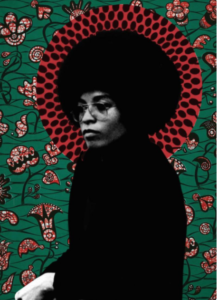
Art Piece “Black Angela”
Work Cited
Molefi Kete Asante, “Afrocentricity”, April 13, 2009
www.asante.net/articles/1/afrocentricity/.
“The Negro Artist Looks Ahead,” Paul Robeson,
Let Nobody Turn Us Around p.319-327
Investigation of Unauthorized use of U.S Passports New York: Viking Press, 1971
http://historymatters.gmu.edu/
Dark Skin Doesn’t Mean Pain Tolerance
By Silvia Estevez
Some doctors were obsessed to prove that there were many physical and mental differences with African Americans and Americans. Using this as a reason to justify why Americans had African Americans as slaves. They used these physical differences between them by saying that they were more stronger and resistant. For that same reason they were denied access to medical attention and treatments. Even to this day there are still some doctors who believe that African Americans are more resistant to certain diseases or pain.
Linda Villarosa talks about John Brown in “Myths about physical racial differences were used to justify slavery — and are still believed by doctors today.” He was a black slave who successfully escaped from all the pain that the physician, Dr.Thomas Hamilton has caused him, due to the experiments he went through. Brown states that he suffered from blisters on his body for nine months. He was determined to prove that the bodies of black people functioned differently from those of white people in order to justify that black lives belong in the fields. Adding to what Hamilton believed, he said that black people lack intelligence and because he had tortured John Brown he found that they can also tolerate more heat and that they are immune to some diseases. When Brown had escaped he went to England, where he wrote and published an autobiography that explained what he went through. According to John Brown’s autobiography, in order to figure out any of this Hamilton put him in hole which he heated up first. “The Doctor bade me strip, and get in; which I did, only my head being above the ground” (Brown, Chap 5, pp. 46). Hamilton repeated this over and over again until he was trying yet another experiment in which he blistered his hands, feet, and legs to test how deep his skin was. He got weaker as time went by and since he never recovered his full strength he got put in a different job, away from the fields.
Over time, there were some insistent myths that black people were able to tolerate pain and that they had weak lungs. Doctors used a tool called spirometers; this was to test the lung capacity of black people. The comparison of lung capacity between white and black people led to the assumptions that black people have weaker lungs. Even though slavery had ended a little more than a century ago, this beliefs still come up in medical education. Villarosa also brings up other doctors like Benjamin Moseley, who according to her, he said that black men tolerated surgical procedures and barely felt pain. While comparing to white people, he said white people couldn’t tolerate the pain. There was also another physician, J. Marion Sims experimented on black women; using them to practice and perfect their surgical techniques. She also tells how women who went through those experiments suffered a lot. Which is proof that black people can feel the pain that any white will. All these theories that doctors had created about African Americans only brought pain to both black men and women. And yet there are still doctors who still believe in these myths, in a 2016 survey of only white medical students it was asked “to imagine how much pain white or black patients experienced in hypothetical situations, the medical students and residents insisted that black people felt less pain” (Villarosa). If about 200 medical students believe this then racism in medical treatment will be harder to end completely; denying black lives the right treatment that they deserved.
Henry Winston explains in “My Sight Is Gone But My Vision Remains” that he helped in WWII and was discharged honorably, he still went to prison because of the Smith Act. While he was in prison he had developed a brain tumor. He wasn’t given the adequate treatment and because of this he ended blind. Even though he didn’t let his situation break him it is still unfair how they contributed a lot and yet are given no respect nor the treatment they deserve. Later in his text he also mentions the richness Africa has and how it has been taken away from them by imperialist states. “The kind of equality the Black people demand in the United States must embody in practice the actual exercise of that right which is characterized by opportunities fully realized, free of discrimination on the job, in housing, education, health, culture and unrestricted in their struggles in any area of democratic and social advancement” (Winston, pp. 482). African Americans lack many resources because of their skin color and other physical differences. Winston in the end all his asking for is to treat Africa the way they will treat any other; same rules.
Dr. Molefi Kete Asante in “Afrocentricity,” he focuses on how differently it would be if people would have seen different perspectives of the events that had happened though African Americans. It would have made them feel included and being also a main character in our society. If since the beginning we centered more on African Americans, it will also make them feel as contributors. If only doctors learned from them scientifically as they did with white people then they wouldn’t feel like John Brown did when he was taken by Thomas Hamilton. Brown did what he was told because he had given up. “Afrocentricity becomes a revolutionary idea because it studies ideas, concepts, events, personalities, and political and economic processes from a standpoint of black people as subjects and not as objects” (Asante). If doctors could’ve seen African Americans as subjects, they wouldn’t use them to learn from them through terrible and painful experiments. Focusing on learning the way scientists did with white people will have given African Americans hope and to feel like the participants they are.
Slideshow: https://docs.google.com/presentation/d/1dEd_6DMWjVMlFWwaD_T8hKeoM00w5NyXjyRWg2dH3vU/edit?usp=sharing
Citations:
The connection between Fred Hampton and Molefi Asante on the Empowerment of Black Identity, and the Importance of Promoting Black Power.
Multimodal Project – Djenaba Diallo -3
The theoretical reading I chose for this project is the Ira Berlin reading, Time, Space, and the Evolution of Afro-American Society on British Mainland North America. This is about the life of African-Americans settling in the US and what is it like living in the slavery period, especially comparing slaves between the North and South. Then, a section from the textbook, Let Nobody Turn Us Around by Manning Marable and Leith Mullings I chose is from Section 2, Chapter 16 called “A Plea for Emigration, or, Notes of Canada West,” Mary Ann Shadd Cary, 1852. I chose those two because they relate to the topic of changing the society and emigrating to a new land and settling there. Ira Berlin’s reading talk about the beginning of the slavery period and also a perspective of African-Americans who lived through the difficulties of slaves as well as how did the increase of African-Americans change the American society and the population. It also mentions the difference between the Northern part of the US and the Southern part of the US. In the North, there are slaves working in factories since it’s mostly urban while in the South, there are slaves working in plantations, experiencing abuse and mistreatment from masters, watchers. Northern slaves are considered to gain more benefits than those in the plantains because they are free. In addition, the textbook mentions about the life of Mary Ann Shadd Cary, an African-American who was born in Deleware, a free state. She also fled to Canada to teach former slaves and free slaves about slavery. In her story, she mentions Canada, where the population of African-Americans increasing overtime.
For the selected artifact, I selected historical figure and the person I selected is Frederick Douglass because he relates to the anthology and theoretical readings that I chose. For example, he changed the society of African-Americans by denouncing slavery and racial discrimation. He also escaped slavery and settled in Boston, which is a free state up in the North. He works as an anti-slavery activist in Boston. Then, he went to Ireland and lectured students about slavery and why we need to abolish slavery. This is a connection between him and Mary Ann Shadd Cary. I say that Douglass is the one who changed American society because he educated himself and spoke up for the people for the African-American community, who are also facing the same crisis. He also worked with several anti-racist campagins and leaders who are also reaching their goal of stopping racial discrimation and desire freedom, justice, and equality. In the Berlin article, it states that black culture is changing in America. I say that is true because as the population of African-American people settle in the US increased as well as bringing in diversity into America and having their own culture as well.
The two genres that I chose are photos and multimedia, but first I will talk about the photos. The photo below is the one I will be talking about. This photo is being described as a slave in the middle with a long chain of chains between him showing that he being the one who is deciding where he wants to go. Looks like that he points up, meaning he wants to go to the North, which is a free state. This is the event of the Underground Railroad in 1854, a secret pathway where slaves secretly escape the South to freedom. Meanwhile, there are two men on the side, one who wears a white outfit and part of the slave state and one who is shaded, wears black, and part of the free state. The man on the right unclacks the shackles and bringing him tot freedom while the man on the left is pretty distant. This shows the difference between two areas.

For the multimedia, I decided to use Douglass’s famous quotes because it is interesting plus Douglass has amazing quotes to share with audience. This quote I will share for this project because it relates to the topic that I am writing about.
This quote means that power over someone who is struggling is a very violent action and it should never be tolerated. Equality is a term that we all want according to Douglass. I chose this quote because it’s very powerful and inspiring. He expresses anger and rage about the society he seen. He wants to change that. Even though that American society is changing overtime, there are struggles as a person of color and a person who feels low in power.
These four sources connect to each other as topic of freedom, migration, slavery, justice, equality, and racism. A slave in the free state vs. a slave in the slave state are two different stories and experiences, but unite as one big topic.
Bibliography
“Frederick Douglass Quote.” A, www.azquotes.com/quote/1367968.
Richland Source. “North Central Ohio’s Independent Local News.” Richland Source, 14 Dec. 2020, www.richlandsource.com/.
Marable, Manning, and Leith Mullings. Let Nobody Turn Us around: Voices of Resistance, Reform, and Renewal: an African American Anthology. Rowman & Littlefield, 2009.
Time, Space, and the Evolution of Afro-American Society on British Mainland North America
For this project, I decided to talk about a significant historical figure who dedicated his life to his Black community. I will focus on W.E.B Du Bois and how he used his knowledge to get justice for his Balck community.
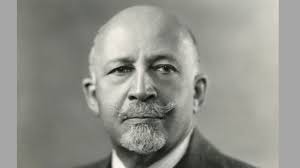
Who is William Edward Burghardt Du Bois?
There are many Black activists who used their knowledge to fight for equality and their rights in America. William Edward Burghardt Du Bois is a major Civil Rights Activist who was born on February 23, 1868, in Great Barrington, Massachusetts and died on August 27, 1963, in Accra, Ghana. He is an African American sociologist, writer, teacher, and leader who helped to change the way society viewed Blacks and their role. During the 19th century, many African Americans were not able to go to college and finish their education due to poverty, racism, and segregation. Unlike other African Americans, Du Bois grew up in Great Barrington which was a white town and there he went to school. He attended the same school as white kids. He did not face racism like other Blacks in different areas in the USA. Du Bois got enrolled at Fisk University in Nashville, Tennessee. Fisk University is a private college for African Americans that was established after the American Civil War to help African Americans finish their education. A church in his birth town (Barrington) raised money for him to pay for college tuition. There, Du Bois experienced his first southern segregation which motivated him to stand up for his Black community. He received his bachelor’s degree from Fisk University and later he was accepted to Harvard University. It was not an easy process for him to get accepted to Harvard University during the period of segregation. College tuition did not stop him from getting a higher degree in History and Sociology that would help him get justice for his Black community. He paid his three-year tuition with scholarships, loans from friends, and summer job money. In 1890, he earned his second bachelor’s degree and Master of Art in history from Harvard University. He traveled to Germany planning to get his Ph.D. He met significant social scientists who were thrilled to meet a man like him. Du Bois wanted to bring what he learned in Europe to the United States hoping to make a change. Unfortunately, he returned to the United States without his Ph.D. due to unknown reasons or requirements. However, two years later, he got his Ph.D. from Harvard University, while he was a professor at Wilberforce University. He was the first African American to earn a Ph.D. from Harvard University. This success does not only represent Du Bois but African Americans all over the United States. Despite all the obstacles that were established to prevent African Americans from succeeding, African Americans are proving their presence and importance in the USA. Du Bois’ educational journey explains how Blacks strove to overcome obstacles of racism and racial segregation.
How did W.E.B Du Bois view racism?
Racism is one of the first issues that challenged Blacks throughout United States history. Before the American Civil War, Blacks were treated as property due to their skin color. Because of and only of their skin color, they were not treated as human beings. The issue of racism is the issue that challenges Blacks regardless of the period of time. In “Of Du Bois and Diaspora: The Challenges of African American Studies”, Gomez analyzed Du Bois’ theory of double consciousness and how Blacks were deprived of their simplest wishes because of their identity. They were forced by society to view themselves through White’s perspective and Black perspective. Du Bois described this as Double Consciousness which is when a person has to view himself/ herself through two different perspectives. It was a must for them to view themselves through the white perspective because this is how society viewed them. Society viewed them with racism and as they are not part of this country. Du Bois believed Blacks would never give up on their identity to satisfy society. Their identity is part of their dream which is to be Black American in America. Du Bois Stated, “He would not bleach his Negro soul in a flood of White Americanism. . . He simply wishes to make it possible for a man to be both a Negro and an American, without being cursed and spit upon by his fellows, with-out the doors of Opportunity closed roughly” (Gomez 176). This illustrates Du Bois’ point of view on how racism affected Blacks in America. Du Bois described how Black natural identity deprived them of their simplest dream which is to be African American. However, Du Bois viewed racism as an obstacle that challenged Blacks and their dreams in America.
What is racial segregation (Jim Crow Laws)? What was Du Bois’ response?
Racial Segregation is one of the main issues African Americans have faced during the 19th-20th century. Blacks were segregated in schools, restaurants, trains, etc. Jim Crow law was to prevent African Americans from their constitutional rights which are equality. The photo illustrated below is one of the significant images in United States history that was taken during the Jim Crow Laws. If you take a closer look at the images, you will see how Blacks were treated by Segregation. The image is very clear in telling the story of segregation. Blacks had to drink from an old water fountain, while whites had to drink from a luxury water fountain, which emphasizes the racial inequality caused by Jim Crow laws. Therefore, this image invalidates the racial segregation statement of “separate but equal” because Blacks are being treated poorly compared to Whites.
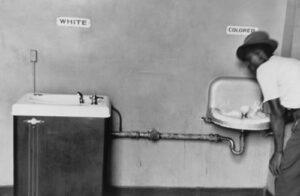
By Elliot Erwitt in 1950 in North Carolina, USA.
However, Du Bois believed racial segregation would prevent Blacks from practicing their constitutional rights and them from progressing. He attacked Booker T Washington who is a Balck leader for accepting racial segregation. Du Bois and other activists gathered in 1905 at Niagara Falls to demand equality for Blacks and end racial segregation. The Niagra Movement is an organization of Blacks leaders and activists whose main mission is to end racial discrimination in all its aspects. They listed all their demands and their duties toward these demands. One of their demands that caught my attention in the Textbook “ Let Nobody Turn us Around” is “Soldiers: We regret that this nation has never seen fit adequately to reward the black soldiers who, in its five wars, have defended their country with their blood, and yet have been systematically denied the promotions which their abilities deserve. And we regard as unjust, the exclusion of black boys from the military and naval training schools’ ‘ (“The Niagara Movement Declaration of Principles”, p-211). This illustrates how blacks are giving up their lives for their country. They are loyal to the country that does not love them, to the country that does not treat them as human beings, and to the country that wounds them every day. Nevertheless, through the Nigro movement, Du Bois and other Blacks activists influenced the formation of the National Association for the Advancement of Colored People (NAACP). This association was formed by White and Black leaders which became the largest organization for civil rights. Through NAACP, Du Bois and other Black leaders were able to end racial segregation.
In conclusion, Du Bois is a significant Civil rights activist who fought racism and racial segregation with his knowledge. Du Bois wrote the “The Song of the Smoke”, which talks about how the Black community suffered racism, slavery, and racial segregation due to their natural identity. In this poetry, Du Bois stated, “Shedding the blood of bloodless crimes”, which emphasize African Americans’ pain of racism and racial segregation. However, Du Bois played a major role in America’s history. He stood up for the voiceless Black community and gave them a voice. He spent his life looking for a better life for the Black community. He overcame all the obstacles that were preventing him and his black community from practicing their constitutional right such as Jim Crow Laws. The Supreme Court ruled school segregation is unconstitutional which illustrates the progress Du Bois was made for the Black community. He was the leader of the NAACP that demanded equality for Blacks. Without Du Bois, blacks would not be where they are today.
Work Cited
History.com Editors. (2009, October 27). W.E.B. Du Bois. Retrieved December 16, 2020, from https://www.history.com/topics/black-history/w-e-b-du-bois
History.com Editors. (2018, February 28). Jim Crow Laws. Retrieved December 16, 2020, from https://www.history.com/topics/early-20th-century-us/jim-crow-laws
Trikha. (2012, November 06). Photographs that tell a story- Elliot Erwitt’s ‘Segregated Water Fountains’. Retrieved December 16, 2020, from https://sophiedaveyphoto.wordpress.com/2012/11/06/photographs-that-tell-a-story-elliot-erwitts-segregated-water-fountains/
W.E.B. Du Bois. (n.d.). Retrieved December 16, 2020, from https://www.crf-usa.org/black-history-month/w-e-b-du-bois
Gomez, Michael A. “Of Du Bois and Diaspora: The Challenge of African American Studies.” Journal of Black Studies, vol. 35, no. 2, 2004, pp. 175–194. JSTOR, www.jstor.org/stable/4129300. Accessed 16 Dec. 2020.
The Song of the Smoke. (2014, December 18). Retrieved December 16, 2020, from https://youtu.be/lzdXw8qbWpI
Marable, M., & Mullings, L. (2009). Let nobody turn us around: Voices of resistance, reform, and renewal: An African American anthology. Lanham: Rowman & Littlefield.
What it is like living during the Civil War for a black person
Today’s date is May 15, 1863
We have been fighting the American Civil war for two years now. I have seen so many people die right in front of my eyes. I lost people that I know. There are a lot of protests and tensions around here. Some states are protesting because they want slavery and some are protesting because they believe in the individual rights and freedoms that are mentioned in the Declaration of Independence. Racism is at its worst. Some people are blaming black people for wanting their freedom and saying that we are bringing the destruction of this country. What can we expect from these people? The man that wrote the Declaration of Independence, owned slaves himself but he talked about Life and Liberty in it. There are so many people dying and so many things happening around us that sometimes I wonder, why are we fighting this war? What is in it for us?
I have spent the last 50 years of my life being a slave. I was born into slavery. I don’t have any memory of my parents because I was separated from them when I was very young. The family I grew up with gave me a basic education and I used to work for them in a cotton field. My master had a total of 14 slaves and one of them was my wife. After working for him for years, our master decided that he didn’t need slaves anymore and he sold us to different families. I got separated from my family when I was 30. I was sold to a family who lives in South Carolina where I was treated really badly and they dehumanized me so much that sometimes I wanted to run away. But I always kept that thought buried inside me. I don’t have any idea how my wife and my kids are doing. I think about how different my life might have been if I didn’t get separated from my family and if slavery did not exist? According to Asante, “What natural responses would occur in the relationships, attitudes toward the environment, kinship patterns, preferences for colors, type of religion, and historical referent points for African people if there had not been any intervention of colonialism or enslavement?” (9). Our life would be so different if slavery never happened. I would have seen my kids grow up who were 5 and 7 at that time. So what is the point of fighting this war? What’s in it for us? I have already lost so much.
I think we are fighting for our freedom and our rights because we want to build a better America for our future generations. We want to build an America where our future generations don’t have to get separated from their families just like I got separated from my family. Where they will not be sold as a product. Where people will see us as humans and not as animals. Where people will realize that we have the right to do everything that a white man can do. In What Black Man Wants, Frederick Douglass said, “We want it because it is our right, first of all. No class of men can, without insulting their own nature, be content with any deprivation of their rights. We want it again, as a means for educating race” (124). Douglass gave us a clear explanation of why we want our freedom from whites. The United States is a free land, therefore, why should we be controlled by those who dehumanize us? Blacks should be free in this land as well. Our descendants should have access to education and have the right to vote. They should be considered citizens of the United States. This is our country as well. Our ancestors have been living in this country since 1619. We have been here for a very long time, yet we can’t consider this land to be our country as it does not give us the right to. We want to build an America where we get to do all the things I mentioned, we don’t want to settle for anything less but more.
Here are some pictures that were posted in the newspaper.
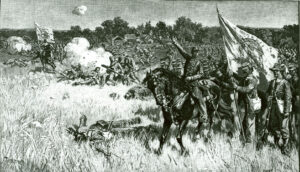

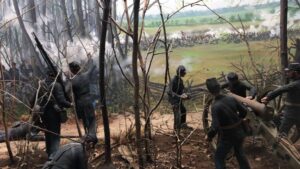
Work Cited
Marable, Manning, and Leith Mullings. Let Nobody Turn Us Around: Voices of Resistance, Reform, and Renewal: An African American Anthology. Rowman & Littlefield, 2009.
Asante, Molefi K. Afrocentricity, Dr. Molefi K Asante, 13 Mar. 2009, http://www.asante.net/articles/1/afrocentricity/
Thure, Thulstrap. “Rallying the Troops of Bee, Bartow, and Evans, Behind the Robinson House.” https://www.nps.gov/mana/learn/historyculture/first-manassas.htm
Blackburn, Alexander. “Alexander, Blackburn: New act expands Shiloh Battlefield.” 2019.
https://wreg.com/news/alexander-blackburn-new-act-expands-shiloh-battlefield/
Library of Congress. “On this day: The epic Civil War Battle of Chancellorsville began near modern-day Fredericksburg.” https://www.nbc12.com/2020/04/27/this-day-battle-chancellorsville/
acculturation – the process of social transformation that an individual undergoes after arriving in a new location or community
“If urban life allowed slaves to meet more frequently and enjoy a larger degree of social autonomy than did slavery in the countryside, the cosmopolitan nature of cities speeded the transformation of Africans to Afro-Americans. Acculturation in the cities of the North was a matter of years, not generations.” (49)
Janelle Poe
fecundity – female fertility and ability to give birth to many offspring
“Because of the general shortage of space, masters discouraged their slaves from establishing families in the cities. Women with reputations for fecundity found few buyers, and some slaveholders sold their domestics at the first sign of pregnancy.” (Ira Berlin, “Time, Space and the Evolution of Afro-American Society on Mainland British North America.” The American Historical Review, Vol. 85, No. 1, Feb. 1980, p 48.)
Janelle Poe
autonomy – an individual’s ability to have control over their mind, body, and freedom to make decisions and move around on their own.
“Living scattered throughout the countryside on the largest farms and working in the house as often as in the field, blacks enjoyed neither the mobility nor the autonomy of slaves employed i the provisioning trade.” (Ira Berlin, “Time, Space and the Evolution of Afro-American Society on Mainland British North America.” The American Historical Review, Vol. 85, No. 1, Feb. 1980, p 47.)
Janelle Poe
provisioning trade – economic sector based on farming and manufacturing goods to fulfill needs of plantations and societies in European colonies of the West Indies and Americas; usually involves stock-herding, transport, metal and leatherwork.
“But, whatever the aspirations of this commercial gentry, the provisioning trade could not support a plantation regime.” (Ira Berlin, “Time, Space and the Evolution of Afro-American Society on Mainland British North America.” The American Historical Review, Vol. 85, No. 1, Feb. 1980, p 47.)
Janelle Poe
Creole – a term of racial identity usually designated for black people of mixed African and European heritage with colonial roots in the West Indies; can also represent any person of African descent born and raised in colonial lands, first generation offspring and beyond.
“Thus while cultural differences between newly arrived Africans and second and third generation Afro-Americans or creoles everywhere provided the basis for social stratification within black society, African-creole differences emerged at different times with different force and even different meaning in the North, the Chesapeake region, and the low country.” (Ira Berlin, “Time, Space and the Evolution of Afro-American Society on Mainland British North America.” The American Historical Review, Vol. 85, No. 1, Feb. 1980. p 45)
Janelle Poe
Farm or plantation owner based socio-economic system; land-owning producers are dominant in economy, politics and culture.
“. . . the development of a plantocracy in the South with a segmented social order and ideals of interdependence, stability, and hierarchy.” (Ira Berlin, “Time Space and the Evolution of Afro-American Society of British Mainland North America”. The American Historical Review, Vol. 85, No. 1 (Feb. 1980). p 44)